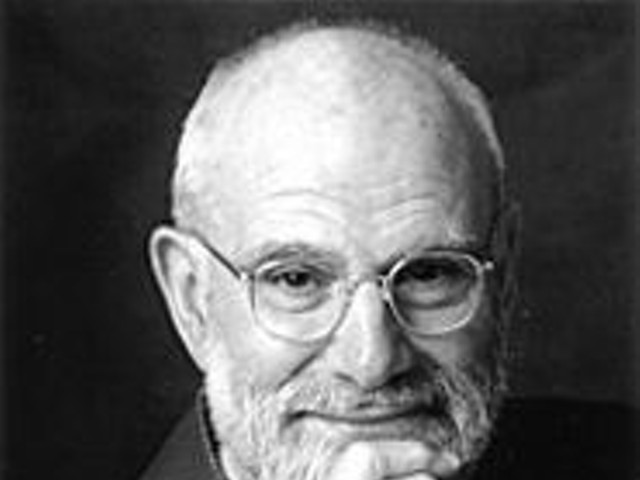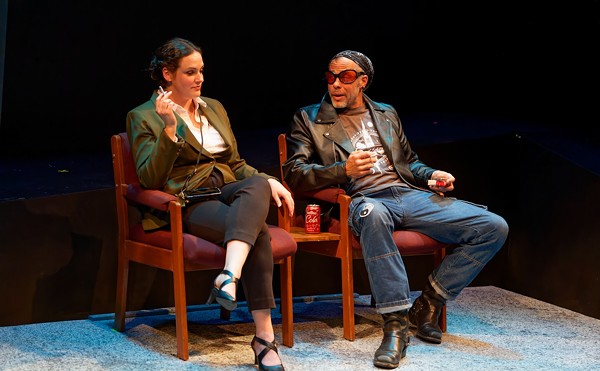What's missing from any contemporary revival is the script's original topicality. The student cast of this effervescent Washington University Performing Arts Department production is so young, one wonders whether director Jeffery Matthews had to provide his actors with a "who's-who" directory. The actors may have learned who Buddy Rogers, Gloria Swanson and the Barrymores were, but many in the opening-night audience did not know, which muted much of the play's original barbed humor.
So what's left? Only this: Moss Hart and George S. Kaufman's take on that beloved stage character the Magnificent Dope. You'll find hayseeds in comedy from Shakespeare to Sheridan. But when it comes to sheer stupidity, abetted by wisecrack dialogue, it's tough to top Kaufman and Hart.
The story is set in 1927, just as the advent of sound has begun to turn the silent-film industry on its ear. As a studio executive bewails, before the talkies, "even if you turned out a good movie, you made money." Now the future is a dulcet-toned question mark. The doltish George Lewis (a delightful Nick Choksi) soon finds himself the ideal employee at Glogauer Studio, where "no time is wasted on thinking." Because George is brilliant at not thinking, he has nowhere to go but up. Think of him as the J. Pierrepont Finch of the late 1920s. Without really trying, George succeeds in rising from unemployed vaudeville performer to head of the studio.
In a cast of 42 -- count 'em, 42 -- actors, the affable Choksi receives solid support. Dan Hirsh's maniacal studio head detonates onstage with bursts of energy, and Pirronne Yousefzadeh's levelheaded leading lady, who is burdened by eons of exposition, bulldozes the play forward with assured deftness.
Moss Hart chronicled this, his debut collaboration with veteran satirist Kaufman, in spellbinding detail in his classic 1959 autobiography, Act One. If the show itself is no longer as essential to our theater appreciation as is Hart's memoir, it remains nevertheless both a fun snapshot from the past and an intriguing harbinger of the future. This script may lack the heartfelt lunacy of Kaufman and Hart's later You Can't Take It With You, but certainly it merits being seen at least once in a lifetime.
West Side Story is emblematic of the symbiotic relationship between stage and film. This 1957 musical fared well enough in its initial Broadway run, but it did not become a bona fide hit until after the movie adaptation was released in 1961. Even the Muny, which in those days promptly exposed St. Louis to all the new Broadway musicals, did not mount West Side Story until 1963, after the film had enthralled America. Since then, of course, the original stage version has never gone away.
OEvery authorized revival of this song-and-dance riff on Romeo and Juliet boasts of its fidelity to the original Jerome Robbins choreography. If that means that the dance steps are the same as in 1957, then I suppose the edition currently on view at the Fox Theatre is also a carbon copy. But as anyone who ever messed with carbon paper will recall, the further removed you get from the original, the dimmer your copy. Surely, if Jerome Robbins were alive, he would whip this pallid production into shape in short order and with his usual lack of tact. He would bluntly remind these dancers that the steps mean nothing if they're not inhabited by an underlying sense of passion and purpose. He would instill his exhilarating choreography with tension, an edge, a sense of danger.
Because Robbins needed space for his dances, he kept his stage sets spare. But there's a difference between spare and threadbare. These sets look cheap. Perhaps that's because they're so wanly lit. Ken Billington is a gifted lighting designer, but his work here is not what one has come to expect from him.
As for the actors, well, from row Z in that Grand (Boulevard) Canyon of a theater, seated back with the coughers and the talkers, it was impossible to tell much of anything about any of the performances. (I neglected to bring my binoculars.) I did hear a lot of finger-snapping. But mostly what I heard, and this in abundance, was that electrifying Leonard Bernstein music. At once lush yet jangling, ever fresh and surprising, it is this production's one tenuous link to the genius that still resides somewhere in the tame touring cash cow that West Side Story has become.





